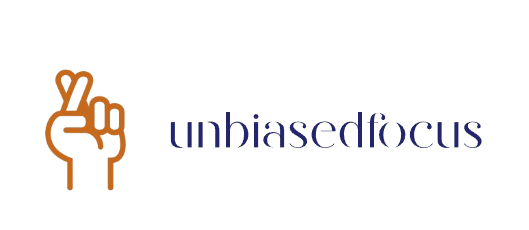Imagine walking into a classroom, armed with a plan and a purpose. That’s the magic of goal setting. It’s like having a GPS for your academic journey—without it, students might just end up lost in a sea of textbooks and late-night cramming. Setting clear goals transforms vague ambitions into concrete steps, making learning feel less like a chore and more like an adventure.
Understanding Goal Setting
Goal setting involves establishing specific objectives to achieve desired outcomes. This process provides direction, enhances motivation, and encourages a focused approach to academic responsibilities.
Definition of Goal Setting
Goal setting refers to the process of identifying clear, measurable, and achievable goals. This method allows students to outline their academic aspirations clearly. Defined goals help students concentrate their efforts on specific outcomes rather than general ambitions. Individuals can track their progress effectively and stay motivated throughout their educational journey.
Importance in an Academic Context
The importance of goal setting in academics cannot be overstated. Clear academic goals improve focus and organization, enabling students to prioritize tasks effectively. Measurable objectives foster accountability, making it easier to assess progress and adapt strategies as necessary. Research indicates that students with well-defined goals perform better, as motivation increases with a focused purpose. Emphasizing actionable steps transforms learning into a structured and engaging experience.
Benefits of Goal Setting

Goal setting offers several advantages that directly contribute to academic performance. Defined objectives shape a student’s educational experience, making it more directed and purposeful.
Enhancing Motivation
Setting specific goals boosts motivation by creating a clear target for students. When individuals identify what they want to achieve, a sense of purpose emerges. This sense fuels commitment to their studies, encouraging them to push through challenges. Research shows that students with tangible goals experience heightened enthusiasm, which translates into increased effort. Excitement for learning grows when students can visualize their success and milestones, further propelling them on their academic journey.
Improving Focus and Organization
Organizing studies around specific goals fosters enhanced focus. Students clearly understand their priorities when clear objectives guide their workflow. With set goals, distractions often diminish, allowing for more concentrated study sessions. Structured plans result from establishing measurable goals, which enable effective self-management. Rather than getting overwhelmed, individuals can work systematically on tasks that align with their aspirations. This clarity leads to higher efficiency, enabling students to track progress and make necessary adjustments, ultimately improving their academic outcomes.
Types of Goals
Goal setting encompasses various types, each contributing uniquely to academic performance. Both short-term and long-term goals play essential roles in guiding students toward success.
Short-Term Goals
Short-term goals focus on achieving objectives within a limited timeframe, typically days or weeks. They enable students to break down larger tasks into manageable steps. For instance, completing weekly readings or studying for an upcoming quiz enhances productivity. Students who establish these goals often experience immediate gratification from their achievements, increasing motivation. Improved focus results from this structured approach, as priorities become clearer. Tracking progress on short-term goals builds confidence, encouraging students to stay committed to their studies. Research highlights that students who set such objectives regularly outperform those who don’t.
Long-Term Goals
Long-term goals involve broader aspirations that span semesters or years. Such goals often relate to graduation requirements or career aspirations. Students benefit from articulating their long-term objectives, as these provide direction and purpose. For example, aiming for a specific GPA or preparing for a chosen career path helps prioritize daily activities. The vision created by these goals can inspire perseverance through challenges. Commitment to long-term goals fosters resilience, especially during difficult academic periods. Research indicates that establishing these goals results in improved overall academic outcomes and sustained motivation throughout the educational journey.
Strategies for Effective Goal Setting
Effective goal setting requires a structured approach. Students can benefit from using proven frameworks and techniques that enhance clarity and motivation.
SMART Goals Framework
The SMART goals framework offers a systematic way to set objectives. Specific goals clearly define what a student aims to achieve. Measurable criteria allow tracking progress over time. Achievable targets ensure that students set realistic goals based on their capabilities. Relevant goals align with individual academic aspirations, keeping efforts focused. Time-bound objectives create deadlines for achieving goals, providing urgency. By following the SMART criteria, students maintain clarity while optimizing their study strategies, which reinforces academic performance.
Visualization Techniques
Visualization techniques can significantly enhance goal achievement. Imagining the end result boosts motivation and commitment. Students might picture themselves acing an exam or receiving a high grade, which cultivates a positive mindset. Creating vision boards that display goals fosters constant reminders of aspirations. Regularly visualizing success can influence actual performance and behavior. Practicing these techniques consistently reinforces focus, allowing students to maintain a clear vision of their objectives. By integrating visualization into their goal-setting practices, students experience heightened enthusiasm toward their academic endeavors.
Potential Challenges
Setting goals can present various challenges. Awareness of these potential obstacles leads to better strategies for success.
Overcoming Obstacles
Obstacles often arise when pursuing academic goals. Students may face time management issues due to busy schedules. Distractions can hinder focus, especially with technology close at hand. A lack of support from peers or family can also complicate the process. Identifying these barriers enables students to create specific plans to address them. Continuous assessment of progress allows adaptability, ensuring that unforeseen challenges don’t derail their efforts. Engaging in open communication about difficulties can also provide additional insights and support.
Maintaining Flexibility
Flexibility plays a vital role in effective goal setting. Adapting to unexpected changes enhances resilience and encourages a positive mindset. Students often encounter shifting priorities or unforeseen events that can disrupt planned routines. Adjusting goals in response to these circumstances ensures they remain relevant and attainable. It’s crucial to reassess objectives periodically, aligning them with current needs and aspirations. Students who embrace this adaptability can maintain motivation and commitment, ultimately driving improved academic performance. Regularly evaluating strategies helps maintain clarity and focus throughout the educational journey.
Conclusion
Goal setting serves as a powerful tool for enhancing academic performance. By providing direction and fostering motivation, it transforms the educational experience into a more engaging journey. With clear and structured objectives, students can prioritize their tasks effectively and minimize distractions.
The SMART goals framework and visualization techniques further strengthen this process, enabling students to remain focused and committed to their studies. Overcoming challenges through adaptability ensures that students can navigate their academic paths with resilience.
Ultimately, embracing goal setting not only boosts academic outcomes but also cultivates a lifelong habit of purposeful learning and personal growth.

